Miso soup is one of Japan’s most loved dishes. With its mild nutty taste and deep umami, it makes a wonderful side to nigiri sushi, a bento meal, or a traditional Japanese breakfast. For this recipe, I am using maitake mushrooms for their delicate earthy taste, and aburaage for its spongy consistency and slight sweetness.
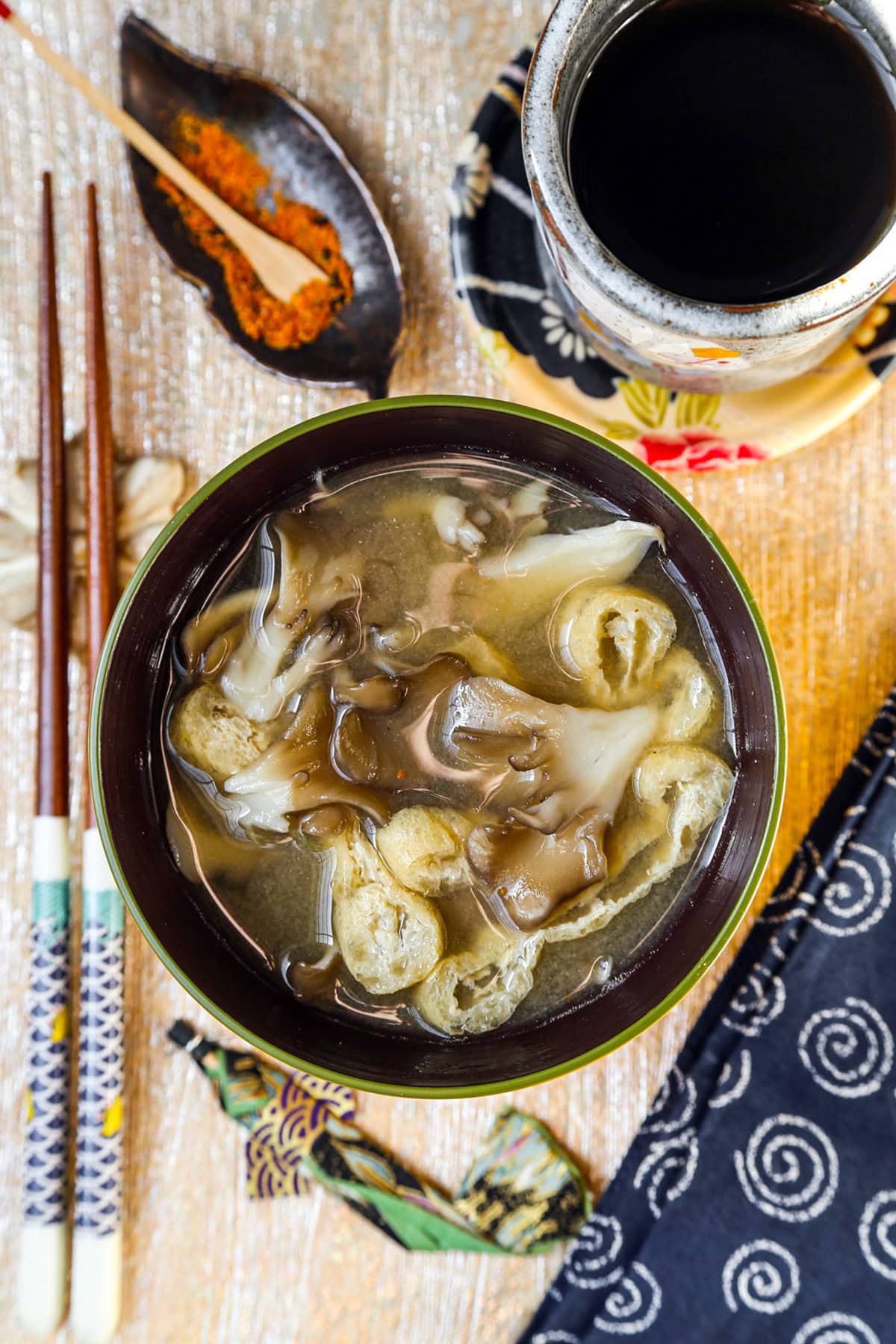
Miso Soup transcends usual mealtimes. Because it’s just as common to eat miso soup for breakfast in Japan as it is to have it with your bento box at lunchtime – or preceding an extravagant sushi or sashimi platter at dinner.
I’m using maitake mushroom and sliced aburaage (fried tofu pouches) to introduce a bit more flavor, texture and heft to this miso soup. However, at its core, it’s still the miso soup we all know and love.
Maitake mushrooms in particular impart both flavor and a light yet substantive chew.
Table of contents
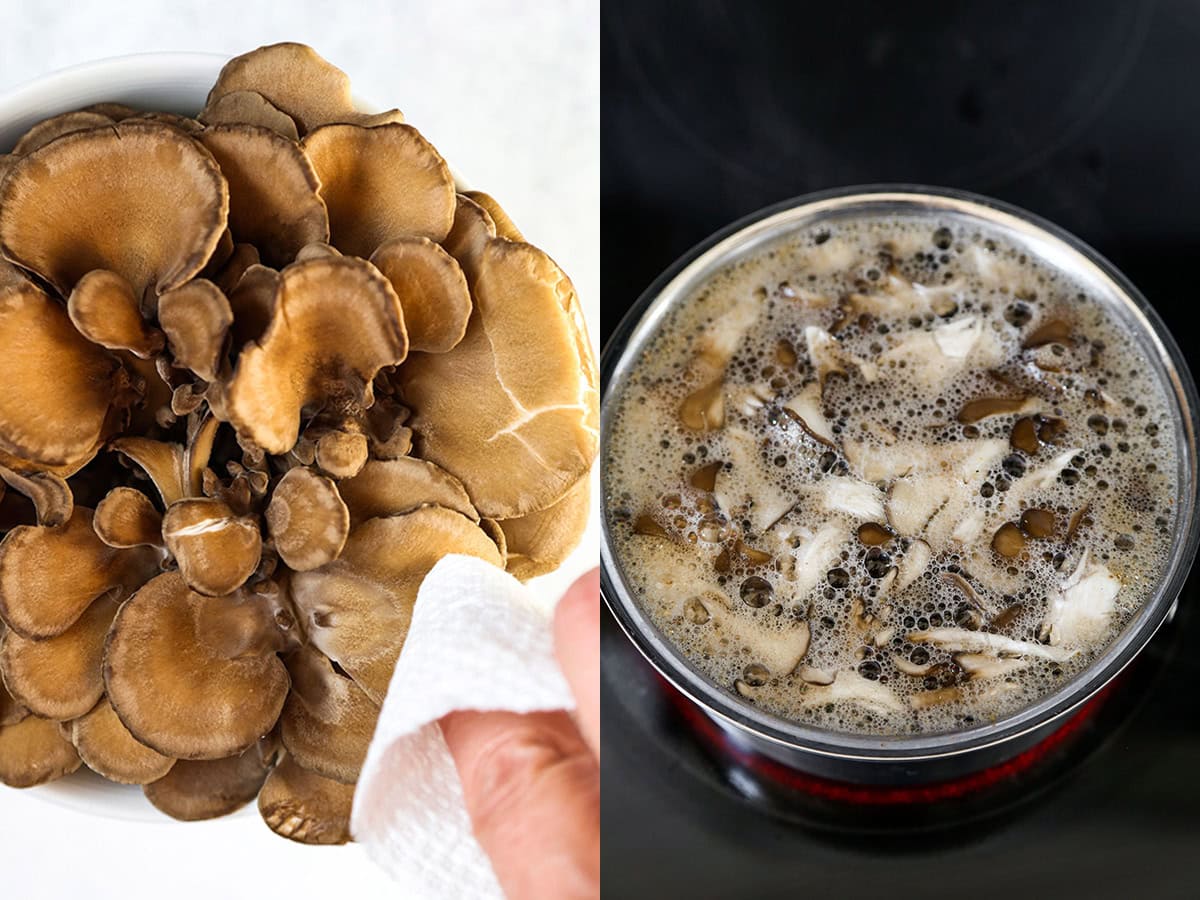
Ingredients
- Maitake Mushrooms: These are the perfect mushrooms to use in miso soup – since they both impart a rustic woodsy flavor to the broth, and soak up the savory, umami goodness from the miso paste. When handling maitakes, be gentle! Maitake mushrooms are rather delicate.
- Dashi: Think of dashi as a saline, savory sea stock made with dried bonito flakes (katsuobushi) and kelp (kombu). It lays a bedrock of umami in many Japanese recipes. Now, I’m using store bought dashi powder for ease – and because it’s delicious. However, I’ve also got a recipe for homemade dashi if you prefer. You can even make vegan dashi with kelp and shiitake mushrooms.
- Aburaage: These are fried tofu pockets with a squashy, springy texture and a mildly sweet flavor. You’ll commonly see aburaage used in Japanese classics like inarizushi – and savory kitsune udon. For this maitake mushroom miso soup, I prefer the dry sheets commonly sold in Asian markets in the frozen section.
- Miso Paste: Earthy, umami and funky perfection. Read all about Japanese miso paste here. In a second, I’ll go into further detail about the best miso paste to use in miso soup – as well as an easy, foolproof Japanese technique for properly blending the miso paste into the dashi broth.
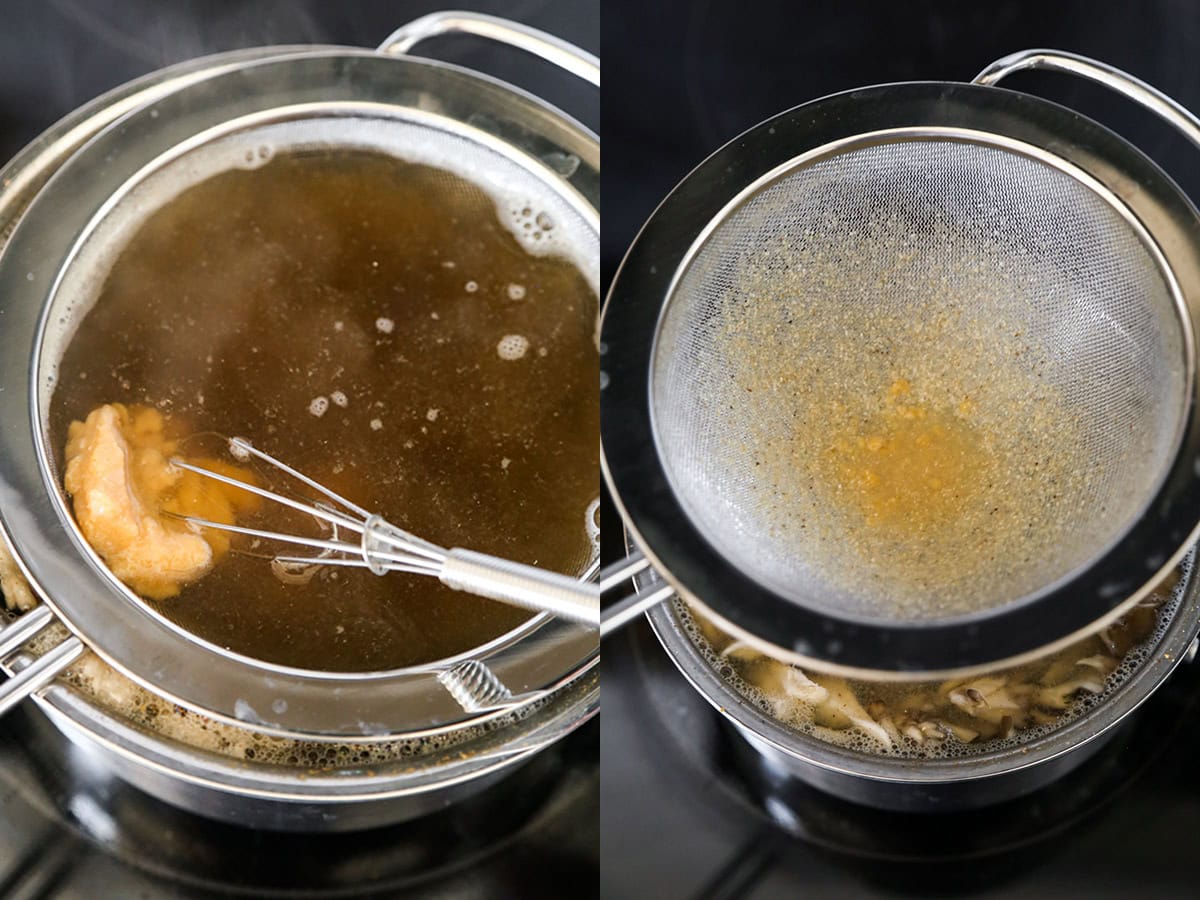
How to Make Maitake Mushroom Miso Soup
- Gather all of your cooking tools and ingredients.
- If your maitake mushrooms have the white bottom base intact, remove with a knife. Wet a paper towel lightly with water and gently wipe the surface of the mushrooms. Then segment them into smaller bite sized pieces by hand. Just pull the mushrooms where you’d like them to separate.
- Add water and powdered dashi into a medium sized pot and bring to a boil.
- Once boiling, lower the heat to medium and add the maitake mushrooms. Cook for 3 minutes.
- Place the miso paste into a small strainer with a handle. Lower the strainer into the pot and stir with cooking chopsticks until the miso paste has dissolved. More on this in a sec.
- Finally, turn the heat off, add the chopped aburaage, stir and serve hot.
Adding Miso Paste To The Soup (Video)
Miso paste is comprised of soybeans fermented with rice koji.
If you stir it directly into soup broth, larger particles of the rice koji and soybean can cause your miso soup to become a little gritty. Using a strainer to stir the miso paste into the soup means you’ll get all the delicious, umami flavor without any unwanted textures.
- Just lower a strainer into the soup pot so the miso paste is covered by the broth.
- However don’t entirely submerge the strainer.
- Stir it using cooking chopsticks or a spoon until it fully dissolves.
- Finally, remove the strainer and discard any bits that didn’t dissolve.
My mother taught me this simple technique and I’ve used it ever since.
Other miso soups you might like:
- My mother’s miso soup, which is a simple miso soup made with onions (it’s so good!).
- Potato and onion miso soup
- Traditional tofu and wakame miso soup
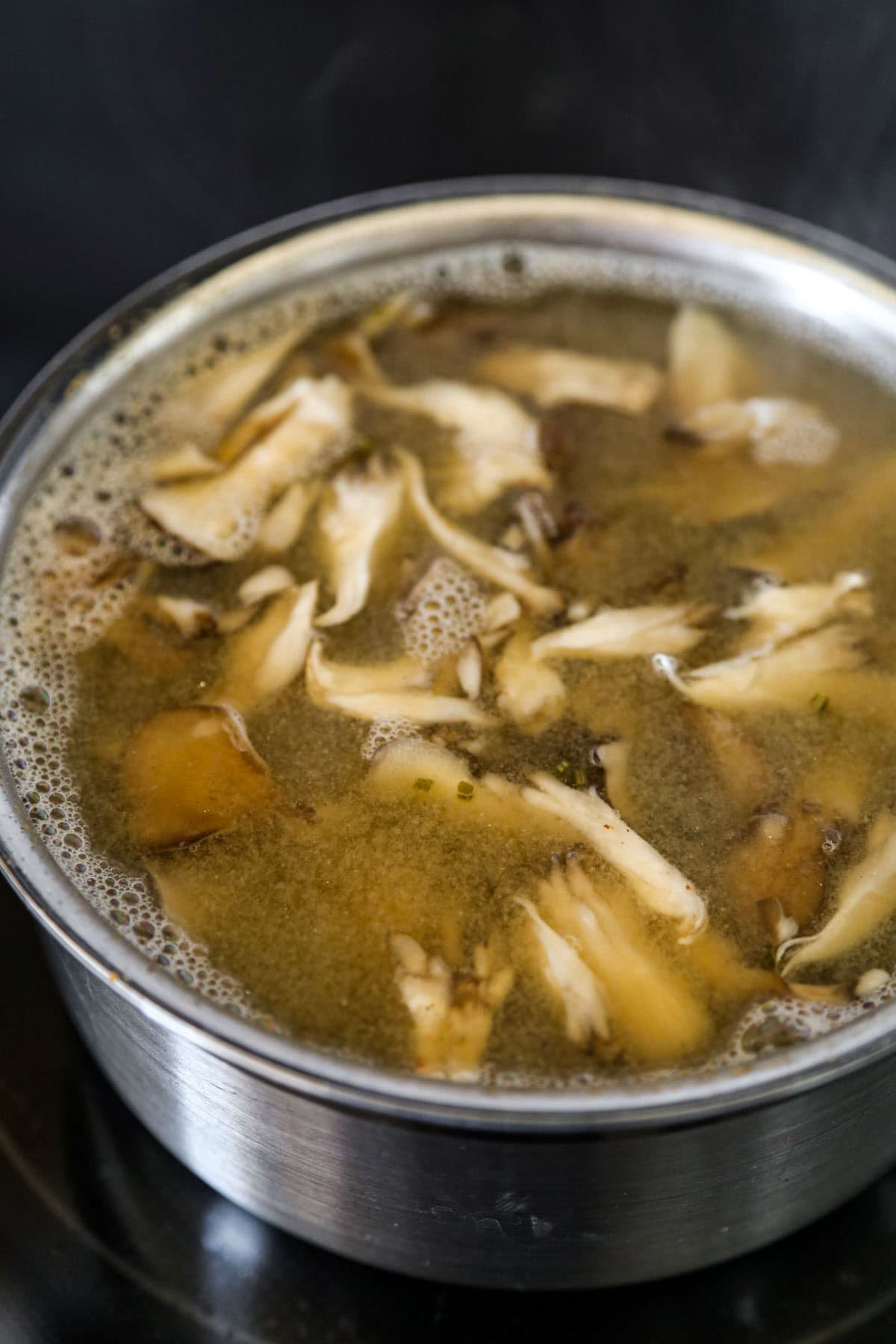
Frequently Asked Questions
Used extensively in Japanese cooking, this fungus is also referred to as hen of the woods as well as ram’s head or sheep’s head mushrooms in the West. Maitakes have thin edges that thicken slightly as they near the base – and manage be both tender and slightly meaty in terms of texture. The flavor is earthy, woodsy and a tiny bit peppery. They work well in stir fry, stews, soups and are delicious when battered and air fried.
There are three different types of miso paste that can be used for miso soup:
Red Miso (赤味噌 – Aka miso) – Bold, dark, earthy, funky and salty. This is the most assertively flavored of the three.
White Miso (白味噌 – Shiro miso) – Smooth, mildly savory and bordering on sweet at times. This is the mildest in terms of flavor and funk and the one that’s most used in Japanese restaurants across the US.
Mixed Miso (合わせ味噌 – Awase miso) – This is simply a mixture of red and white miso. It has a great balance of boldness and restraint.
You can purchase all of these ingredients at a Japanese supermarket. If not, most Asian grocery stores should also have these ingredients. If you live in a remote area where it’s harder to have access to international ingredients, Amazon is your best options.
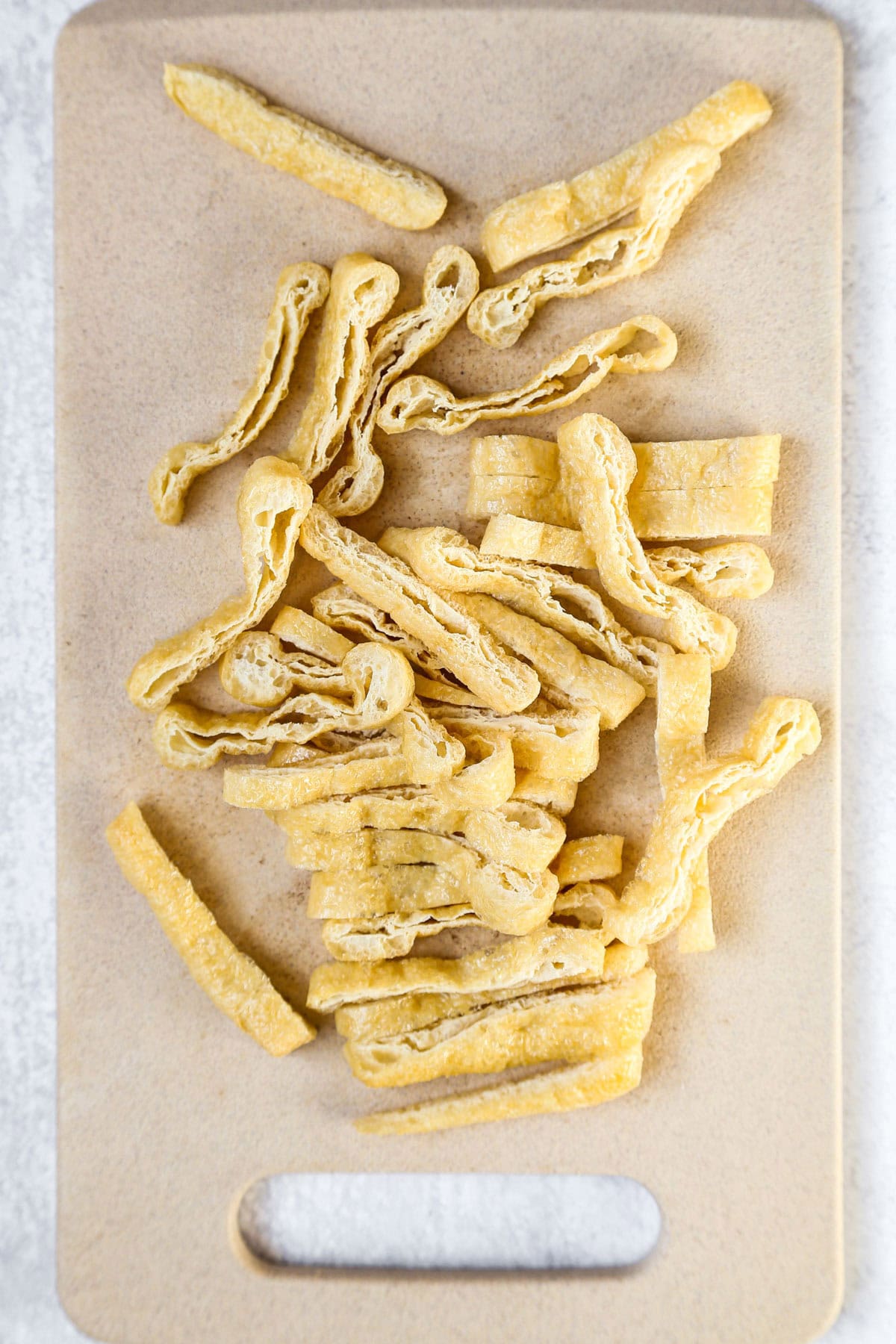
Storage
- Refrigerate any leftover of this miso soup in a storage container for up to 2 days. Keep in mind that the longer the aburaage soaks in liquid, the more it will expand. If you would like to make some ahead of time, I recommend holding off on the aburaage and only use it when reheating the soup.
What to Serve With This Soup
Like I mentioned, miso soup is served for breakfast in Japan – as well as being a staple served throughout the day with lunch and dinner.
While you really can’t go wrong, here are a few recipe ideas if you’re whipping up a Japanese feast at your place:
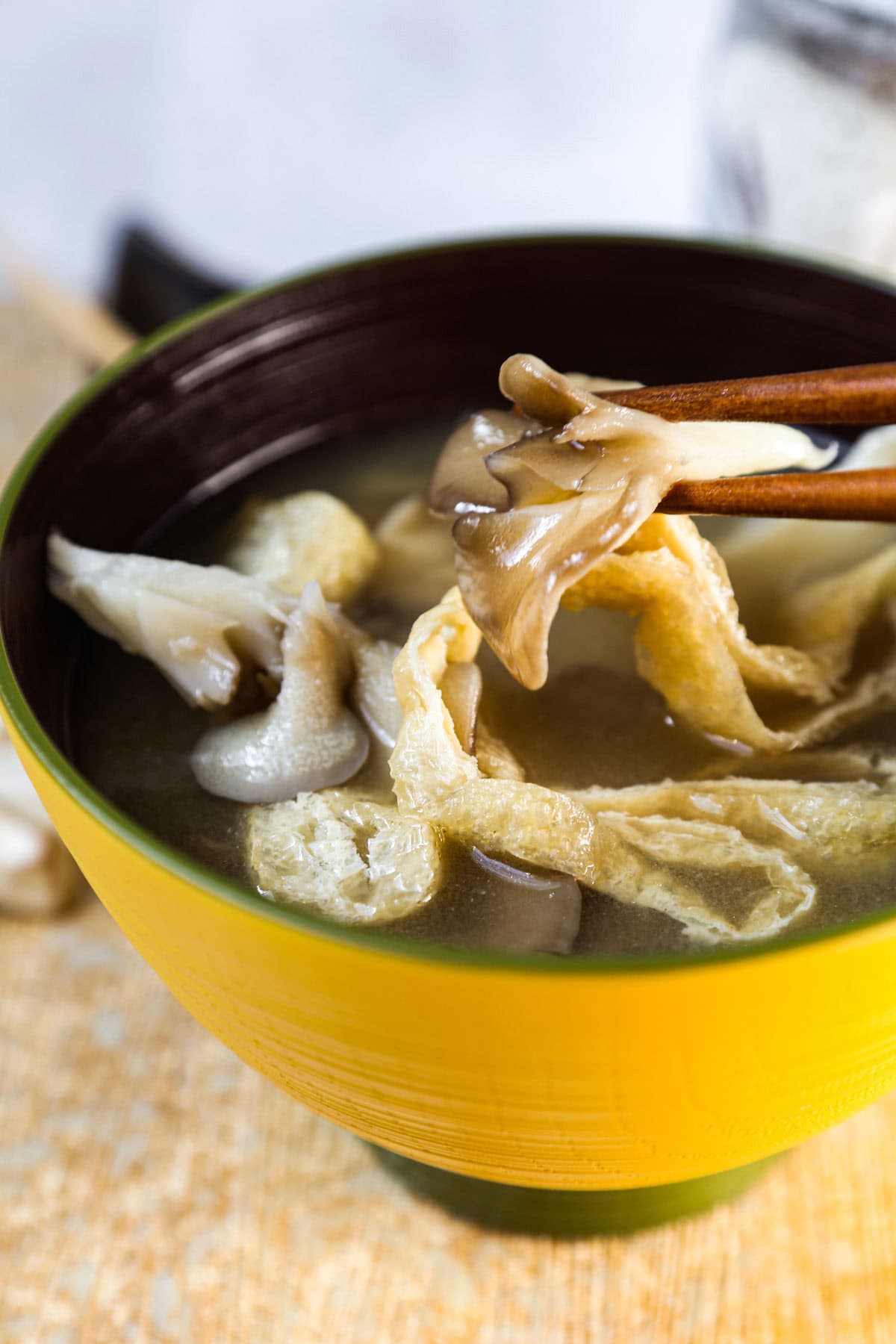
Did you try this recipe? Are there changes you made that you would like to share? Share your tips and recommendations in the comments section below!
Print
Maitake Mushroom Miso Soup
- Prep Time: 10 minutes
- Cook Time: 5 minutes
- Total Time: 15 minutes
- Yield: 4 servings 1x
- Category: Soup
- Method: Boiling
- Cuisine: Japanese
- Diet: Vegetarian
Description
This miso soup uses maitake mushrooms for their earthy taste, and aburaage for their spongy texture and slight sweetness.
Ingredients
- 1 package maitake mushrooms (100g / 3.5 oz), bottom base removed
- 4 cups water
- 1 tablespoon powdered dashi
- 2 sheets abura-age (Japanese fried tofu pouch), sliced into bite size strips
- 3 to 4 tablespoons white or awase miso paste
Instructions
- Lightly wet a paper towel and gently wipe off the surface of the maitake mushroom. Maitake mushrooms are quite delicate so they are easy to separate by hand. Simply pull where you would like the maitake to break apart and keep going until you have bite size pieces. Set aside.
- Add the water and powdered dashi to a medium size pot and bring to a boil.
- Lower the heat to medium and add the maitake mushrooms. Cook for 3 minutes.
- Place the miso paste in a small strainer and lower the strainer into the pot, until the liquid covers the miso paste. Stir the miso paste with chopsticks until it has fully dissolved.
- Turn the heat off and add the aburaage to the soup. Stir and serve.
Notes
Keep the leftovers in a container and refrigerate for up to 2 days.
Nutrition
- Serving Size: 1 serving
- Calories: 74
- Sugar: 3g
- Sodium: 3mg
- Fat: 3g
- Saturated Fat: 0.2g
- Unsaturated Fat: 1g
- Trans Fat: 0g
- Carbohydrates: 9g
- Fiber: 1.6g
- Protein: 4.7g
- Cholesterol: 0mg














